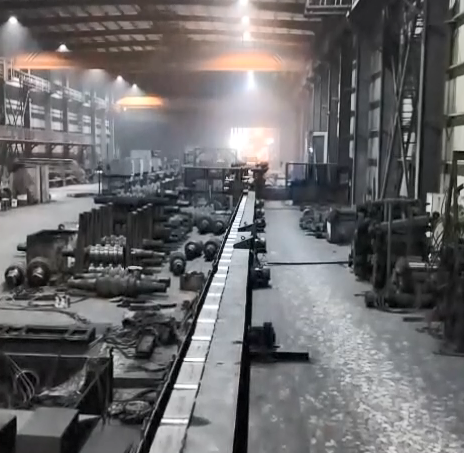Control of prefabricated atmosphere
Controlling a Prefabricated Atmosphere

When metallurgists, engineers, and furnace operators refer to a controlled atmosphere, they are referring to a cold, externally prepared gas of a specific, constant composition, supplied to indirectly heated furnaces such as electric furnaces, radiant tube furnaces, and muffle furnaces. Most prefabricated atmospheres are currently prepared in separate gas generators, which may pass through H₂O and CO₂ absorbers before entering the heating chamber. Most generators utilize partial combustion of a gaseous fuel. Therefore, controlling the prefabricated atmosphere primarily involves maintaining a constant fuel-to-air ratio entering the generator and removing H₂O, CO₂, and other components after combustion over a catalyst. Efforts to reduce the amount of oxide scale formed on steel surfaces predate the term “prefabricated atmosphere” (Control of prefabricated atmosphere).
Natural atmosphere
As discussed earlier in this book, oxidation can be virtually avoided in a natural atmosphere, provided that a sufficient excess of fuel is present in the fuel-air mixture and the required temperature is maintained. An early example is the air curtain furnace, which appeared around 1927. Under very low air conditions, coal gas is burned in combustion chamber A. A pressure gauge B indicates the fuel-to-air ratio. Incompletely burned coal gas enters the heating chamber through a gap near the furnace door, forming an air curtain Control of prefabricated atmosphere. The supply of incompletely burned coal gas automatically increases each time the furnace door is opened.
Fuel ratio
This furnace is designed to protect the workpiece D from oxidation at temperatures of 1200°C or even slightly higher. The intersection of the H:/H2O and CO/CO2 ratios must be in zone R (the reducing zone). To achieve this, the air-to-fuel ratio must be kept as low as possible without extinguishing the flame or soot deposition. High-temperature heat is supplied to the furnace by electrically heated silicon carbide heaters. To achieve non-oxidizing heating, the heat released by incomplete combustion alone cannot reach a furnace temperature of 1200°C. Although temperatures exceeding 1200°C are generated by very incomplete combustion, Control of prefabricated atmosphere.
This inevitably results in excessive fuel consumption, slow heating, and the need for a very large and expensive furnace. The heat released by the electric heating element can raise the furnace temperature to the required value, so the hot shielding gas only serves a protective purpose, not a heating function. The amount of shielding gas produced is sufficient only to maintain the furnace pressure.

